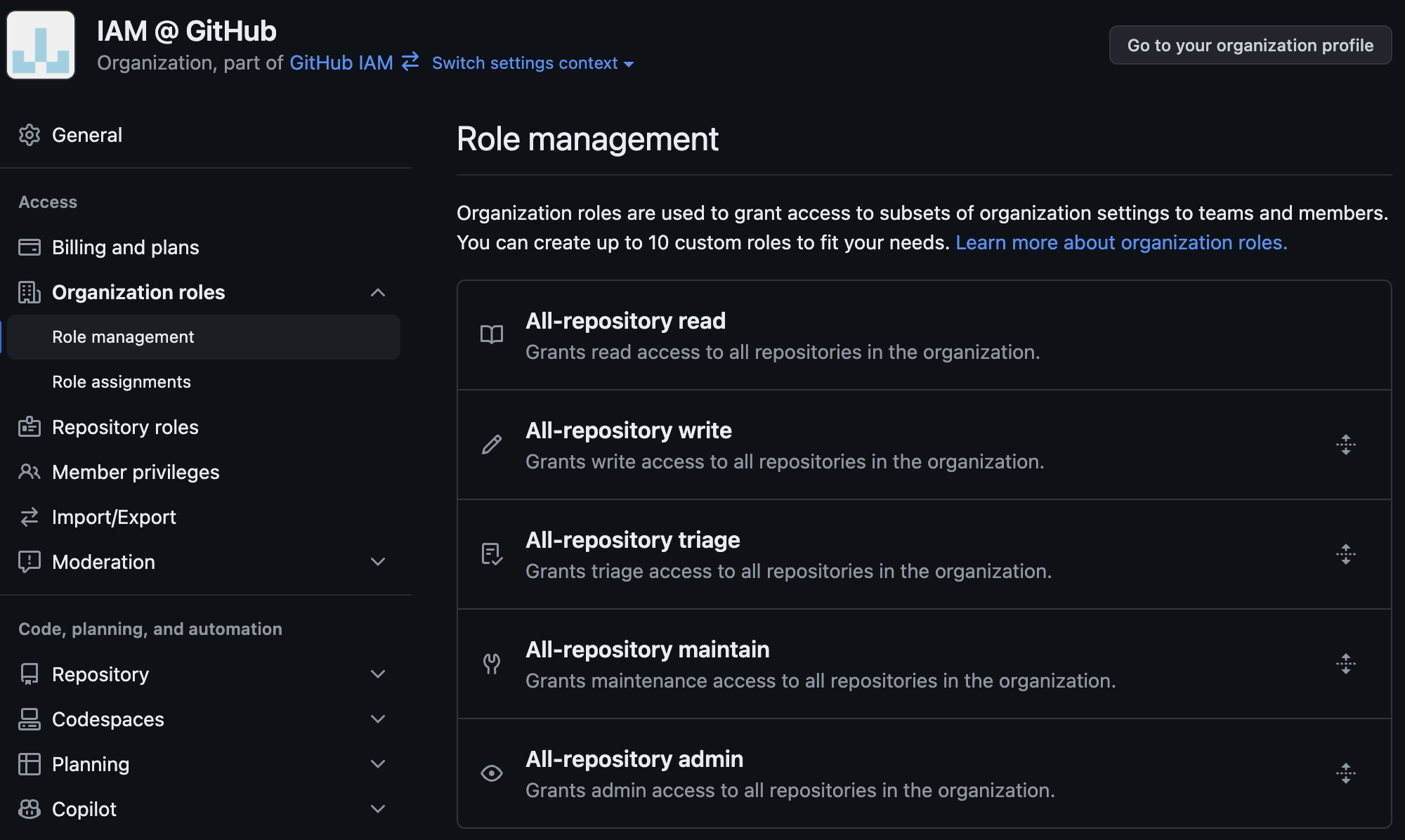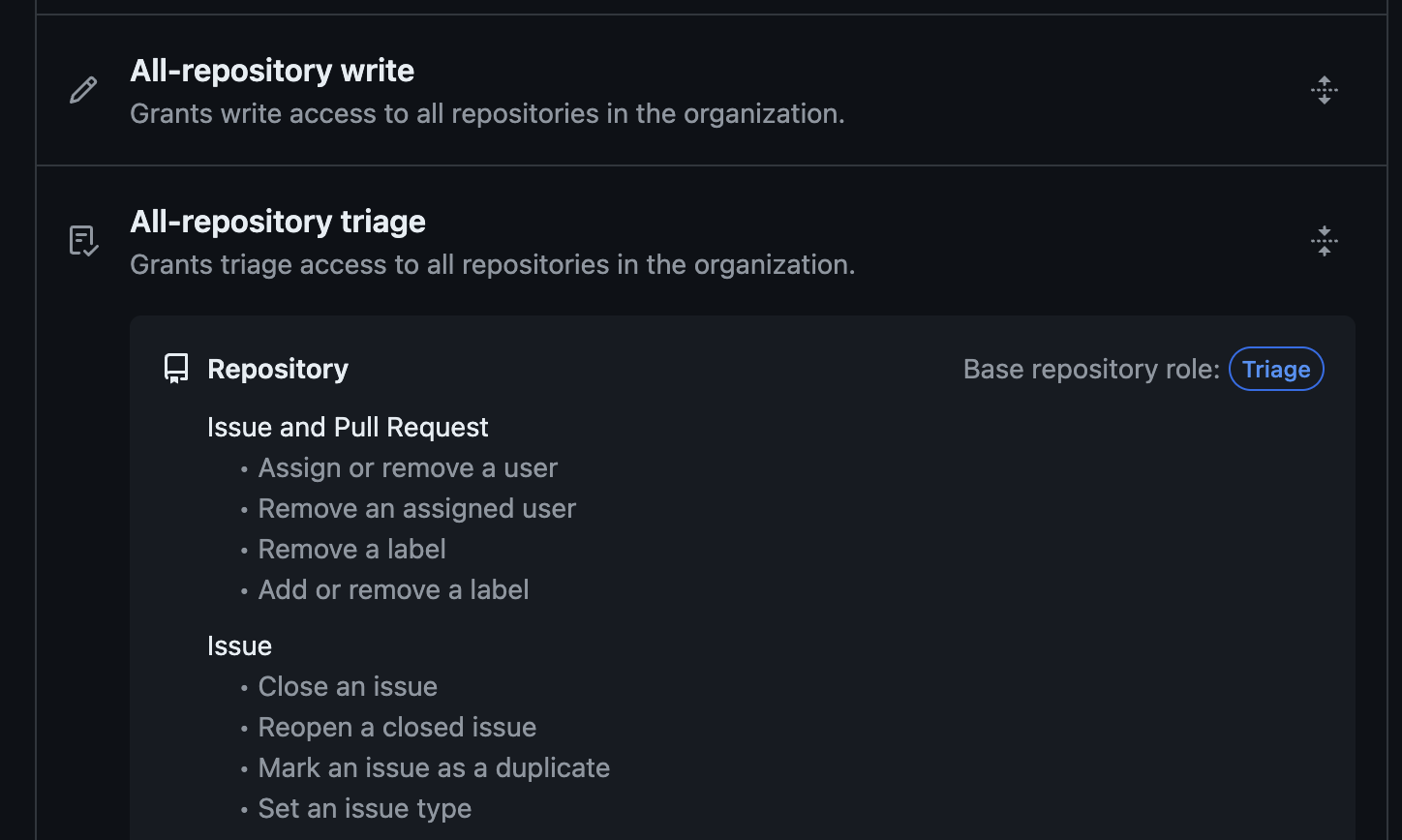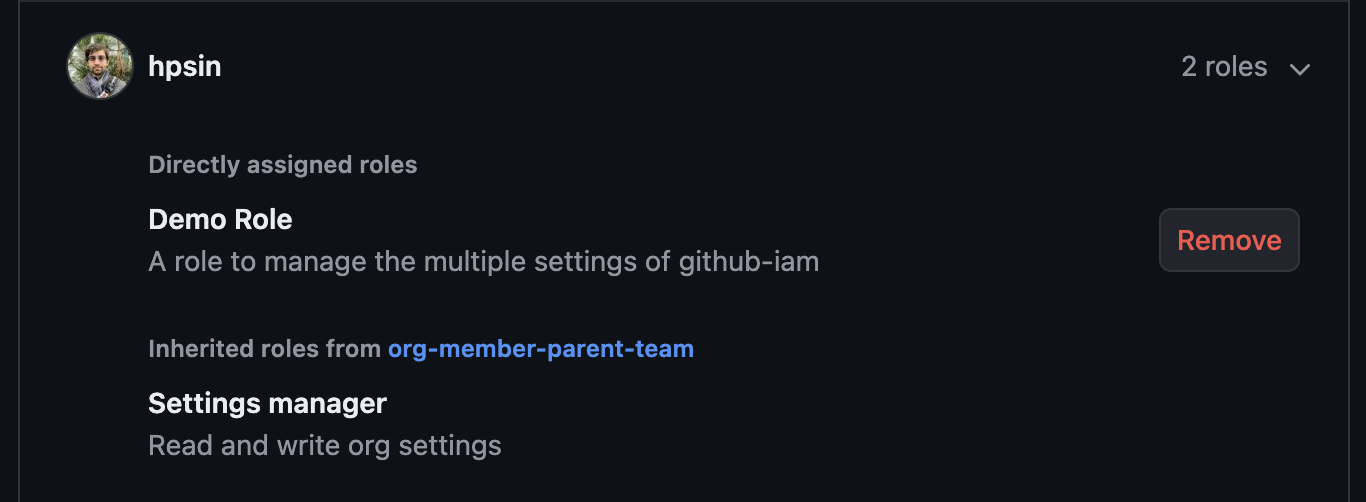Organization owners can now grant a user or team access to all of the repositories in their org with a single click. Five new pre-defined roles have been added to the organization settings, under Organization Roles > Role Management, where all organization owners can view and assign them.
Pre-defined roles ship natively with GitHub. We will add more pre-defined roles over time that support common personas like “CI/CD Admin” or “Security Manager”.

Introducing pre-defined roles and organization-wide repository permissioning
These five new roles showcase an expansion of organization roles – the ability to also include repository-level base roles (like read) and permissions (like close issue). When granted, the recipient has those privileges on all of the repositories in the organization, current and future. While organization owners cannot yet create organization roles that include repository permissions, that will be supported in the coming months.

This new functionality of organization roles helps organizations replace automation that watches for new repository creation and adds the right users or team to every repository.
UI updates to show role assignments
When users and teams are assigned access across all repositories, this is called out in the team and repository view rather than list all of the accesses.

In addition, the Roles Management view in the organization settings has been updated to show indirect assignments – these are roles that a user or team recieves due to a team that they are a member of. This provides a full accounting of all organization roles that a user or team has within the organization.

The APIs for organization role management have been updated to support these pre-defined roles. You’ll find a base_role field in the description of the organization role, which is the repository role (like read) that is included in the organization role.
You can learn more about organization roles at “Using organization roles“.



